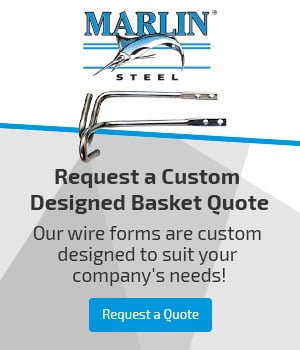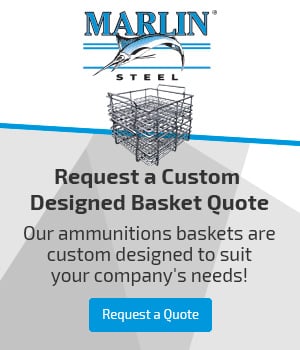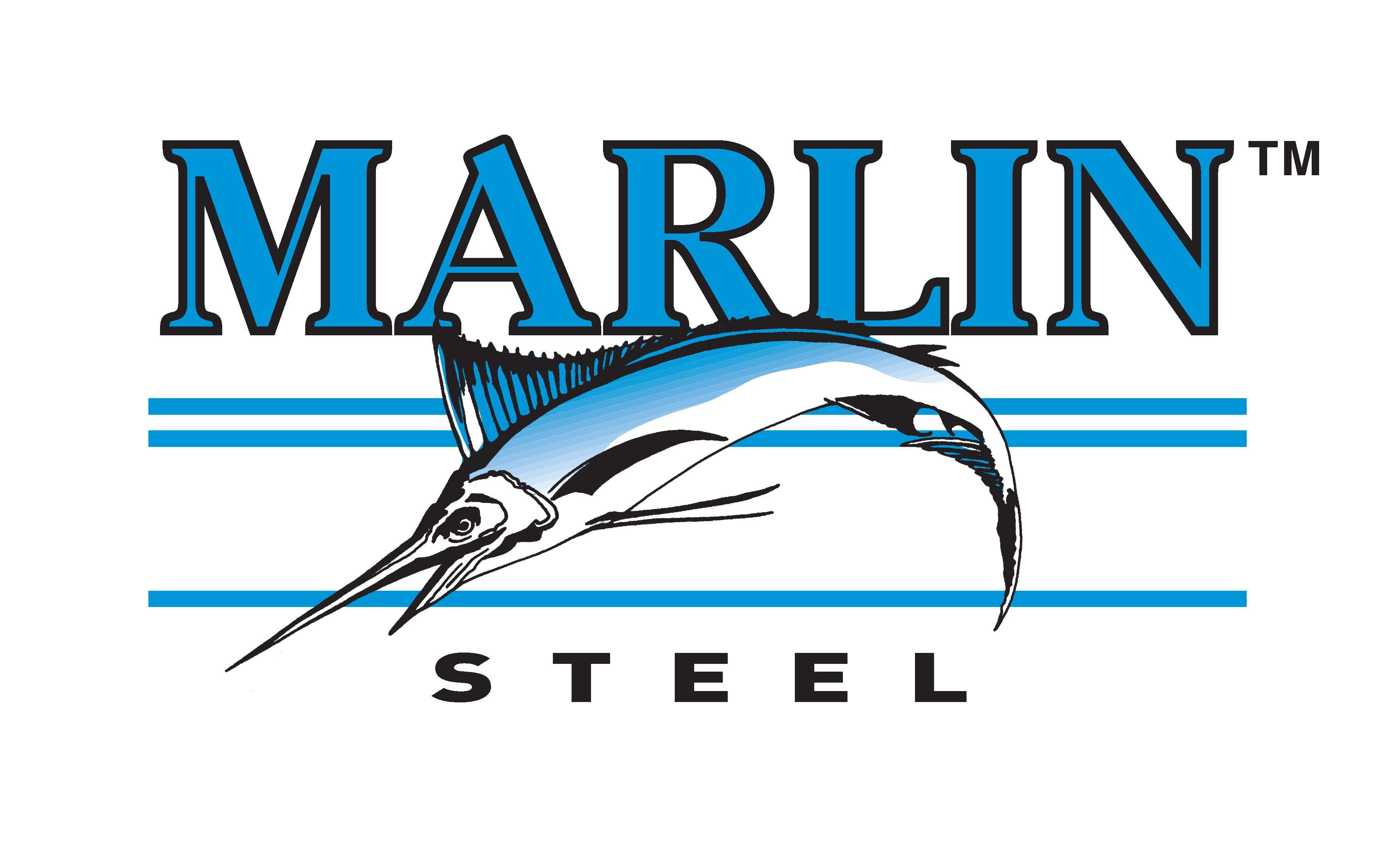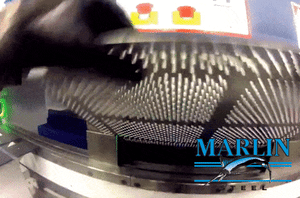 One common question that other companies have about Marlin Steel is “How does your sheet metal fabrication process work and what techniques do you use?” This is an important question for many manufacturers because the sheet metal fabrication techniques Marlin’s manufacturing team uses has a direct impact on the quality, consistency, and parts tolerances of the sheet metal forms that they make.
One common question that other companies have about Marlin Steel is “How does your sheet metal fabrication process work and what techniques do you use?” This is an important question for many manufacturers because the sheet metal fabrication techniques Marlin’s manufacturing team uses has a direct impact on the quality, consistency, and parts tolerances of the sheet metal forms that they make.
To help illustrate Marlin’s sheet metal fabrication process, here is a quick explanation of how Marlin makes sheet metal forms:
Sheet Metal Fabrication: Cutting the Holes
One of the first things that Marlin’s manufacturing team does (after selecting a piece of sheet metal of appropriate size and thickness) is pass the sheet metal plates through an automated cutting machine.
Marlin uses a few different machines for cutting sheet metal, and the specific machine used will change depending on the application.
- Laser Cutting Machines. Marlin’s Trumpf TruLaser 1030 laser cutting machine is able to easily cut through steel up to 15 mm (0.6”) thick at a rate of 18 meters (61 feet) per minute. This laser leaves smooth edges, eliminating the need for secondary operations—which saves time and money. Also, because there’s no physical tool to be worn out by contact with the sheet metal, this laser cutter can keep working long after a physical tool would need replacing.
- CNC Punch Machines. Marlin’s 20-ton CNC punch machine uses extraordinary mechanical force to punch holes in sheet metal. Unlike the laser cutter, this machine can be used to make bends and three-dimensional shapes in the sheet metal. So, it is often used when there is a need to create small, complicated shapes from the sheet metal. Marlin’s CNC metal punch machine can perform extruding, tapping, wheel forming, and deburring operations.
Some applications will use only one or the other of these two machines, while others may use both. The choice of machine depends on the application. For simpler designs that only need a flat sheet with smoothly-cut holes, the laser cutter is usually preferred. Meanwhile, designs that require small and intricate shapes to be added where the holes are being made may go through the CNC punch instead.
Sheet Metal Fabrication: Deburring Sheet Metal
After the initial cut is completed, the sheet metal may be passed through a deburring process. This is most common with CNC punch processed metal plates, as the laser-cut plates rarely need it.
Marlin Steel uses several deburring machines, including a wide wet-belt sanding machine and a Timesavers 2200-Series dry deburring machine.
This step in the sheet metal fabrication process helps smooth out any rough edges or sharps that could be harmful to people handling the final product. It also helps to eliminate irregularities that may affect the fit between the sheet metal and other pieces.
Sheet Metal Fabrication: The CNC Press Brake
To make larger bends in sheet metal plates, Marlin’s sheet metal fabrication team puts the sheet metal into a large CNC press brake. Marlin’s Trumpf CNC press brake is incredibly accurate at both “bottom bending” (where the sheet metal is completely compressed to the bottom of the die) and “air bending” (where the sheet metal is left some room between itself and the bottom of the die). In most cases, the accuracy of the bend is within +/- 10 microns (for reference, one inch is 25,400 microns).
Marlin’s manufacturing team has several degreed mechanical engineers who have the know-how to calculate the required inside radius of a bend for different types of metal. This is thanks to Marlin’s ongoing investments in employee learning and the “job skills matrix” that Marlin uses to track employee knowledge sets.
The CNC press brake uses hundreds of tons of force to shape metal quickly and precisely, helping to ensure that Marlin can generate top-quality results fast.
Sheet Metal Fabrication: Welding the Sheet Metal
To ensure high-strength custom sheet metal baskets, Marlin’s degreed engineers use a series of automated welding machines. These welding machines ensure that every weld is completed to exact specifications, every time. This helps to prevent potential weaknesses from missed or incomplete welds—which happen all the time when welds are done manually.
Marlin’s premier welding tool is its medium-frequency direct current (MFDC) welding machine. This super-fast welder can complete a welding operation in 2/1,000 of a second—which is around 50 times faster than the human eye can blink.
Sheet Metal Fabrication: Touch-Up and Coatings
After the welding process is complete, the sheet metal form is put through whatever finishing processes it requires to meet the client’s needs. In many cases, this might involve a second deburring to eliminate any burrs or sharps that may have occurred during welding. Or, the basket/tray may be put through an electropolishing procedure to render it microscopically smooth (this is very common for food and medical applications, where sanitation is a must).
Sometimes, the client needs the sheet metal form to have a soft polymer coating to prevent the parts it holds from getting scratched or damaged during handling. This may involve dipping the sheet metal in a vat of liquid polymer, hot-flecking dry powder onto the basket, or dipping a hot basket in a bed of polymer powder.
Marlin uses a variety of coating types and processes to meet the needs of a variety of clients from different industries all over the globe.
Need a custom sheet metal form engineered ASAP? Reach out to Marlin Steel today!

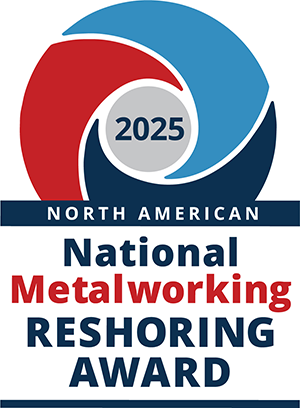

.gif)
